* One tiger salamander
* Distinctly chewed wood that provides evidence of Ice Age beavers
* Insects, including iridescent beetles
* Snails and microscopic crustaceans called ostracods
* Large quantities of well-preserved wood, seeds, cones, and leaves of white spruce, sub-alpine fir, sedges, seeds, and other plants.
Truly, this is
The Age of Mammals, the companion mural to the Age of Reptiles at the Yale Peabody Museum, come alive. Age? The final word isn’t in yet, but it’s looking like somewhere between 40,000 and 130,000 years old. To give you a sense of the timing, the last interglacial began about 130,000 years ago, and the last ice age began about 100,000 years ago, ending just 10,000 years ago. You can read more about the discoveries in the Post
here and
here.
I have to say I do want to know more about the Ice Age beavers. I’m imagining they had some pretty sweet ice age digs — you know, lodge all tricked out with mammoth-fur lined walls and satellite TV.
Like these guys.
In any case, on Saturday, the Museum held a Mastodon and Mammoth Madness Day at the Museum to show off a handful of their finds for one day only before everything disappears for a few years to be preserved. Yours truly made sure to attend (I do it all for you, dear readers) so I could be there for those of you who couldn’t. When I arrived I found swarms of children and a variety of non-Snowmass fossils blocking the way to the main event. No matter, I parted the seas to find the proper table. There, volunteers were assiduously misting the unprepared bones with squirt botttles.
Here was the first bone I looked at — a mastodon tusk. Note the blue stains.
A volunteer informed me those are actually a blue mineral formed from the biological ooze in the bone. The name is escaping me, but I think it was a woman’s name starting with a V + ite (Vanessite?)
Notice the tip. It’s not broken. Here’s a closer look.
Though it’s a little hard to see in this photo (go look at the photo at the very beginning of this post too), the end is worn smooth, from use in life. Just like the wear and tear on your molars. Speaking of which . . .
Here is the jawbone of a Columbian mammoth with one of its worn-down and extremely characteristic molars. They look like some sort of funky scrubbing pad, if you ask me. I LOVE the pattern. But even cooler than that is what lurks in that little shadow next to the tooth. See inside? It’s *a new* molar, just waiting to erupt. And unlike the existing molar, its crown is perfectly pointy and unworn.
You might be able to see it a little bit better here:
Mammoth teeth are very distinct from mastodon teeth. For comparison, here’s a mastodon molar, which looks much more like our own:
So by now you may be wondering, “Just how big were mastodons and mammoths compared to us and each other?” Well, I’m glad you asked — the museum had handy dandy banners made up, and I inserted myself into the picture as your human scale bar. I am quite a short human, though — only 5’2″ (just over 1.5 m). So bear that in mind. : )
Here’s a mastodon, which as you’ll see, is a little smaller than an elephant:
And here is the Columbian Mammoth — which was much bigger!
The museum also had bits of other fun stuff they found in the peat from which they’ve been excavating the bones, including lots of bits of grass and grass seeds:
Those are
tens-of-thousands-of-year old grass seeds and blades, folks. And they look like they just fell yesterday! Would be fun to see if you can get any of them to germinate. They also had a very tiny piece of peat with an irridescent blue beetle butt, but the light was too bad and my camera too poor to capture it well. The beetle was so well preserved they could identify it to family as a
Buprestid.
Alas, they didn’t have the sloth bone on display, but they did have a giant sloth skeleton from another site displayed:
Finally, I happened to notice this inconspicuously laid on a table nearby. Real woolly mammoth hair!!
I’m sure it came from a frozen mammoth somewhere. Though they found Columbian mammoths — not woolly mammoths — at this site, it was still so cool to see. The box had like six different “NEVER OPEN THIS” stickers, but to me, it was so wonderful that, in theory, I could pet the fur of a mammal long extinct from the Earth. The bones at Snowmass seem to have come from a swamp or lake, so the odds of finding fur are slim. But you never know . . . there’s always next season. And I can’t wait to find out what’s still buried out there, high up and lonesome at 8,874 feet.

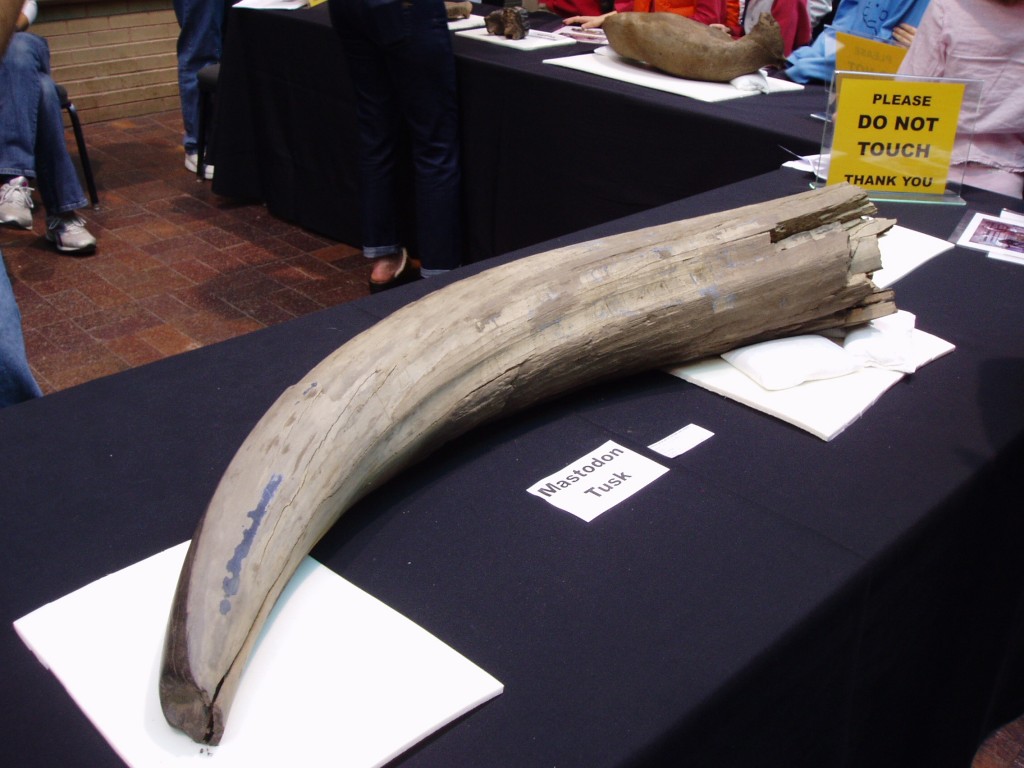
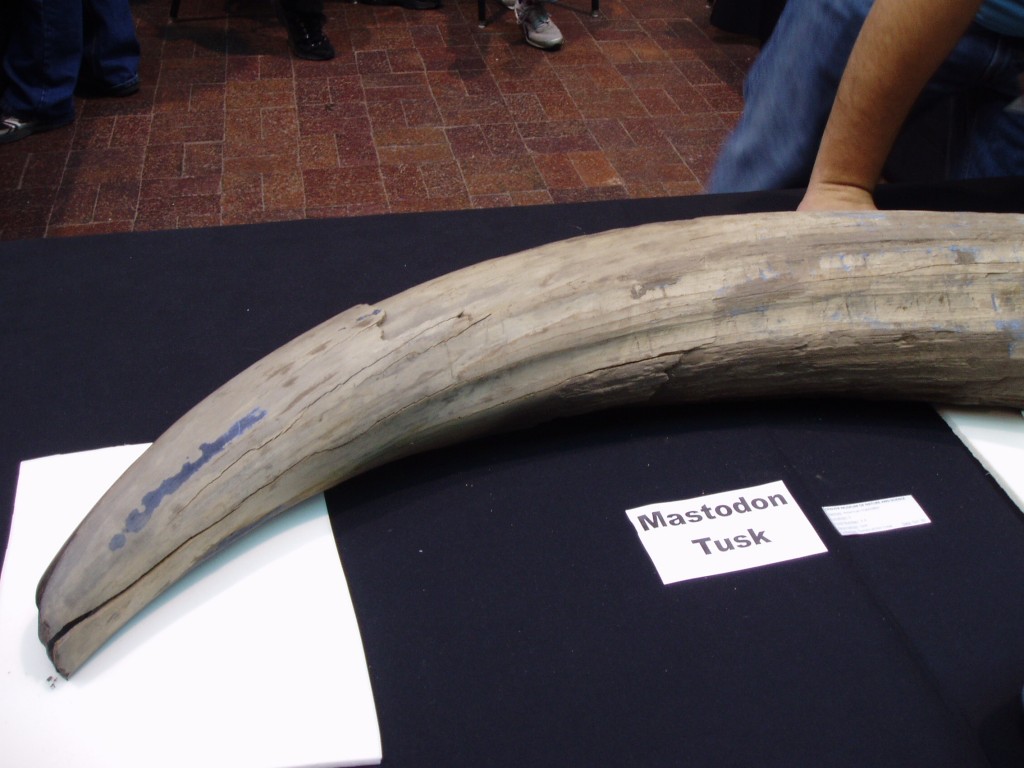
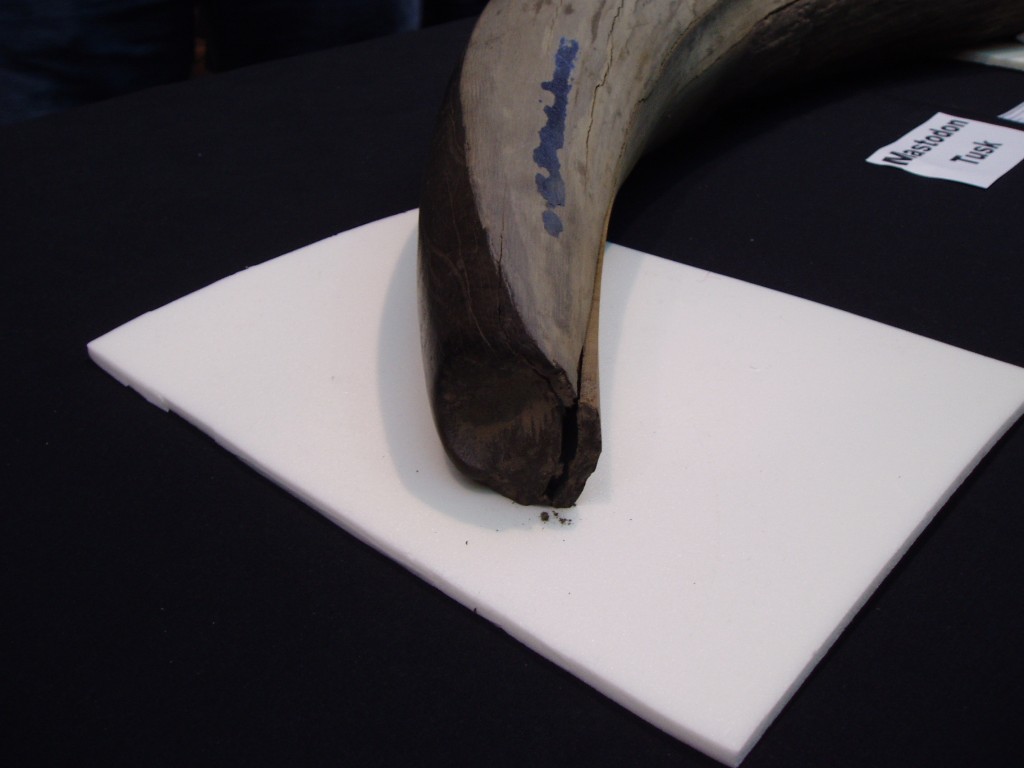
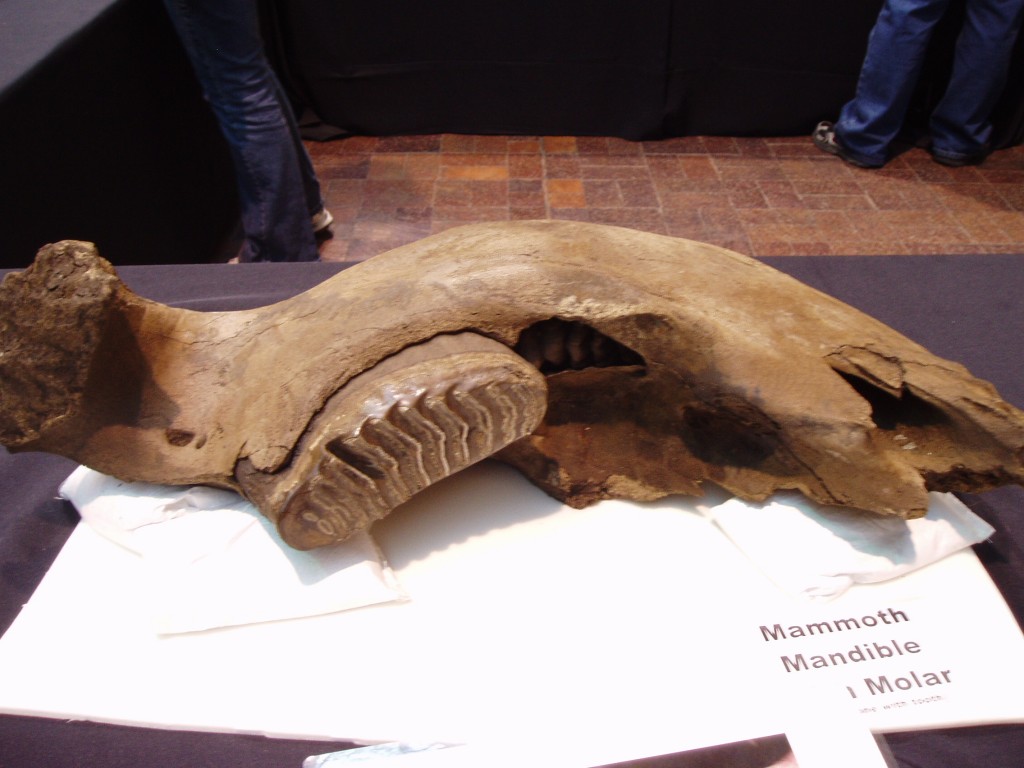
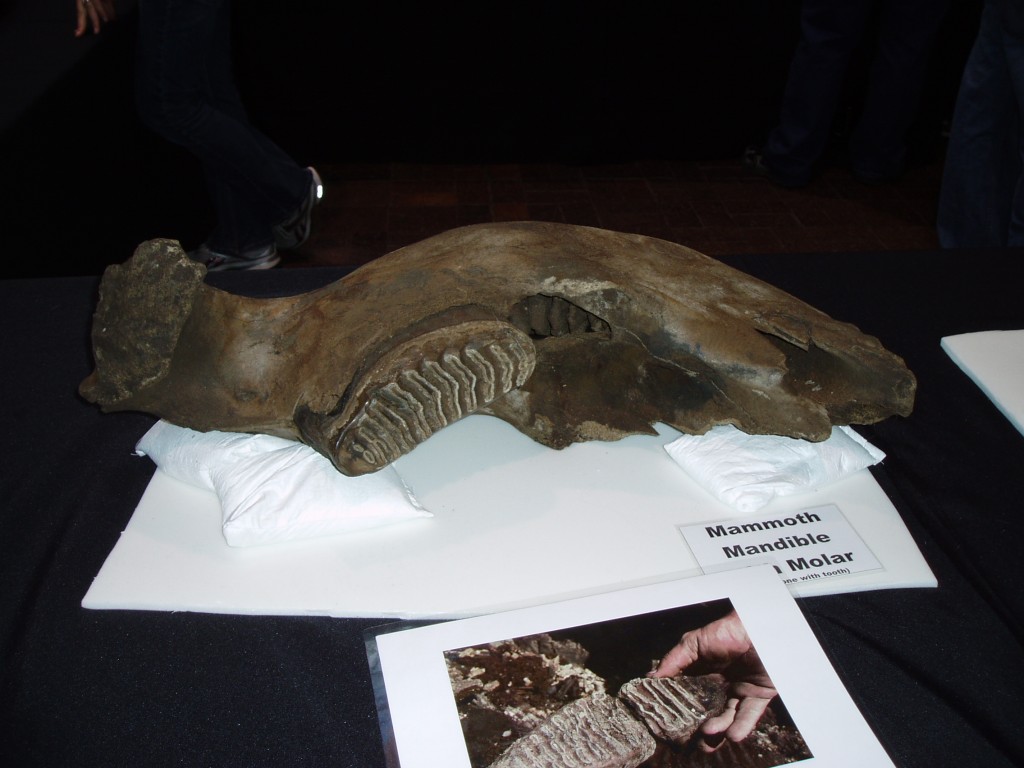
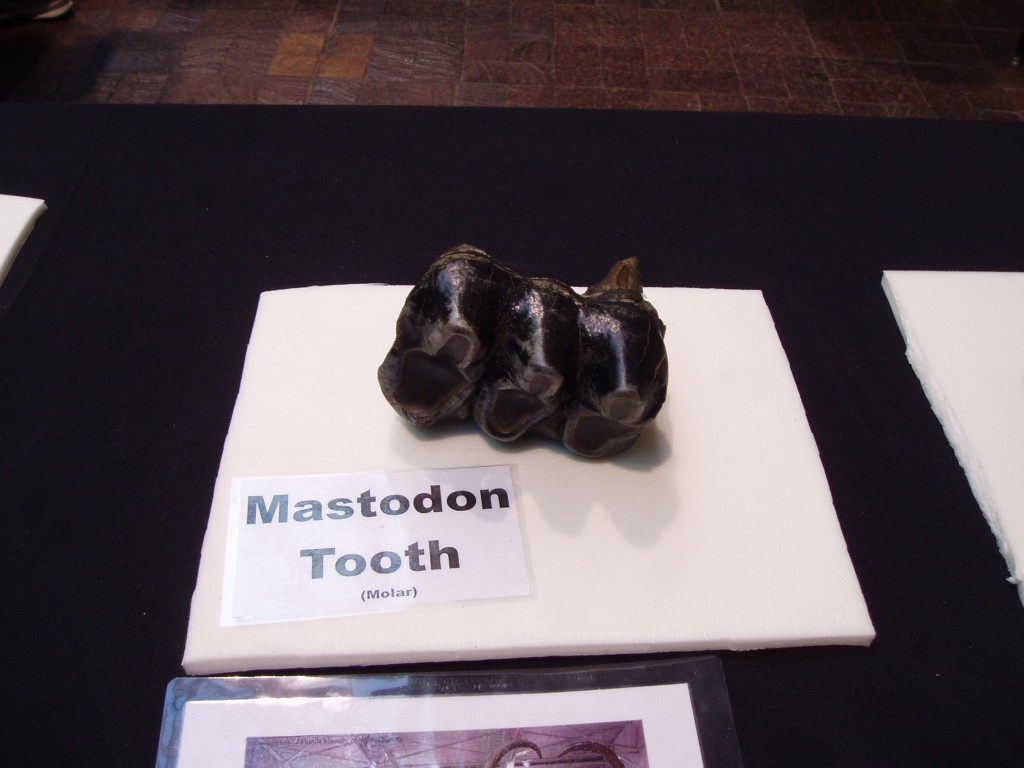
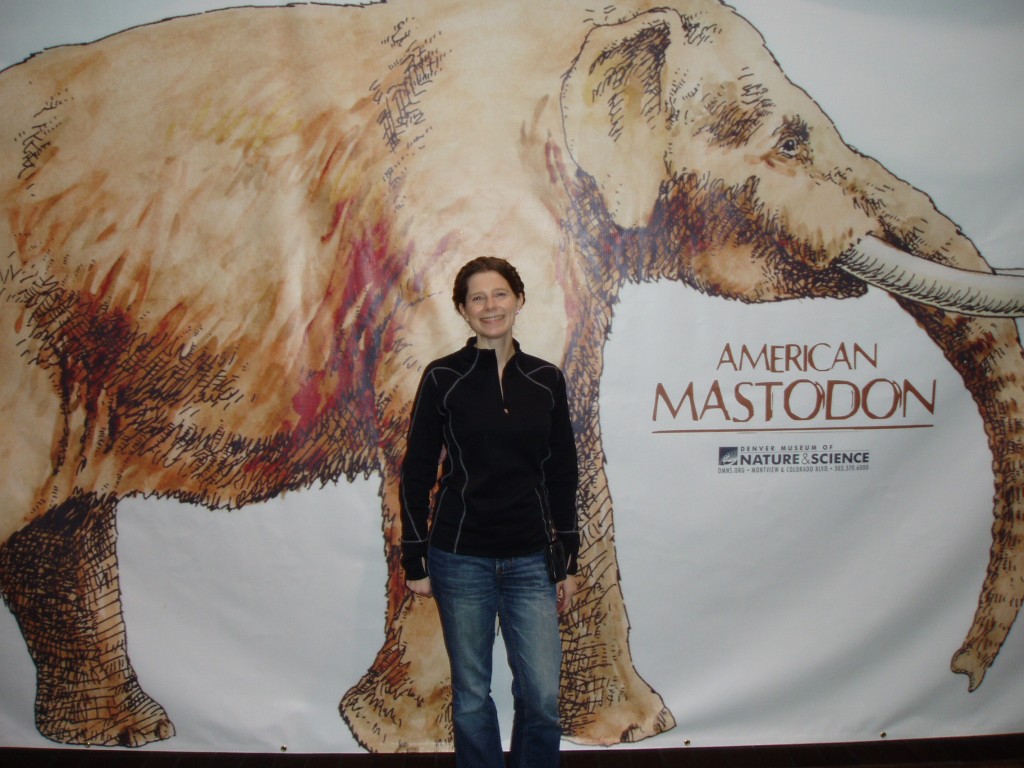
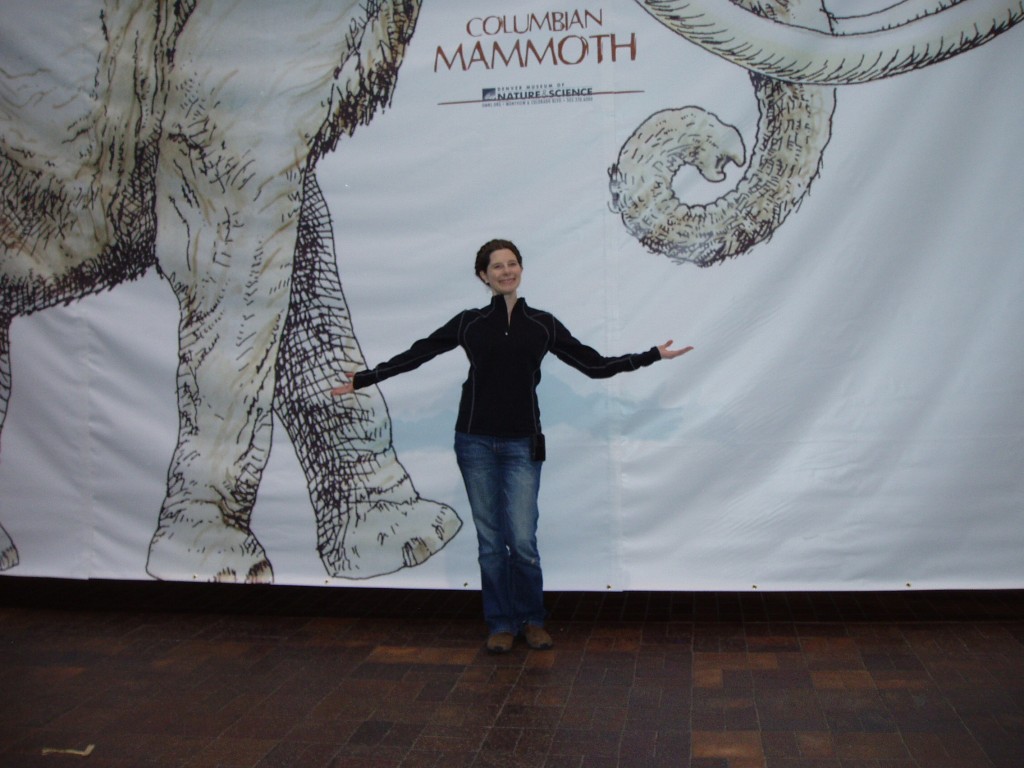
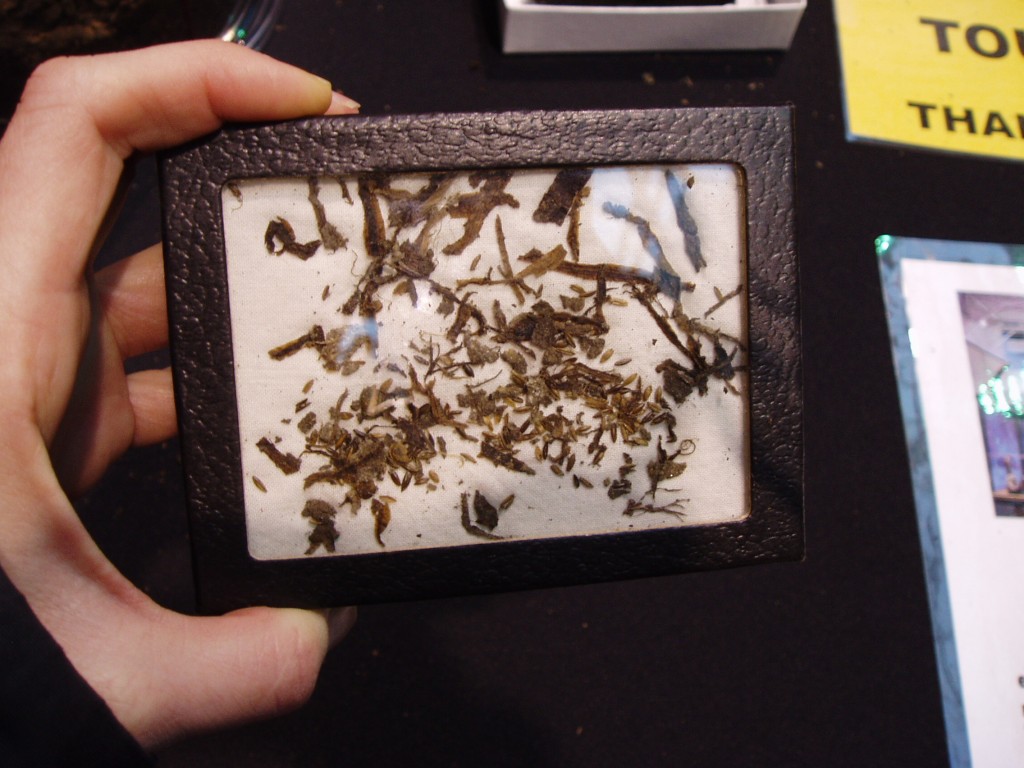
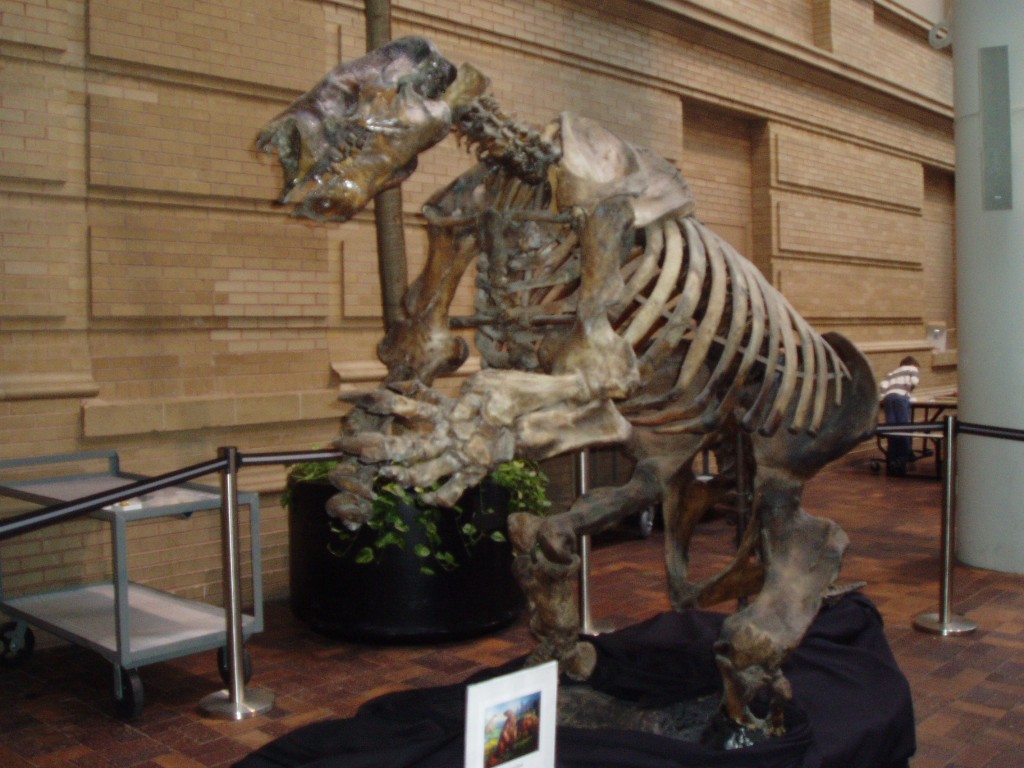
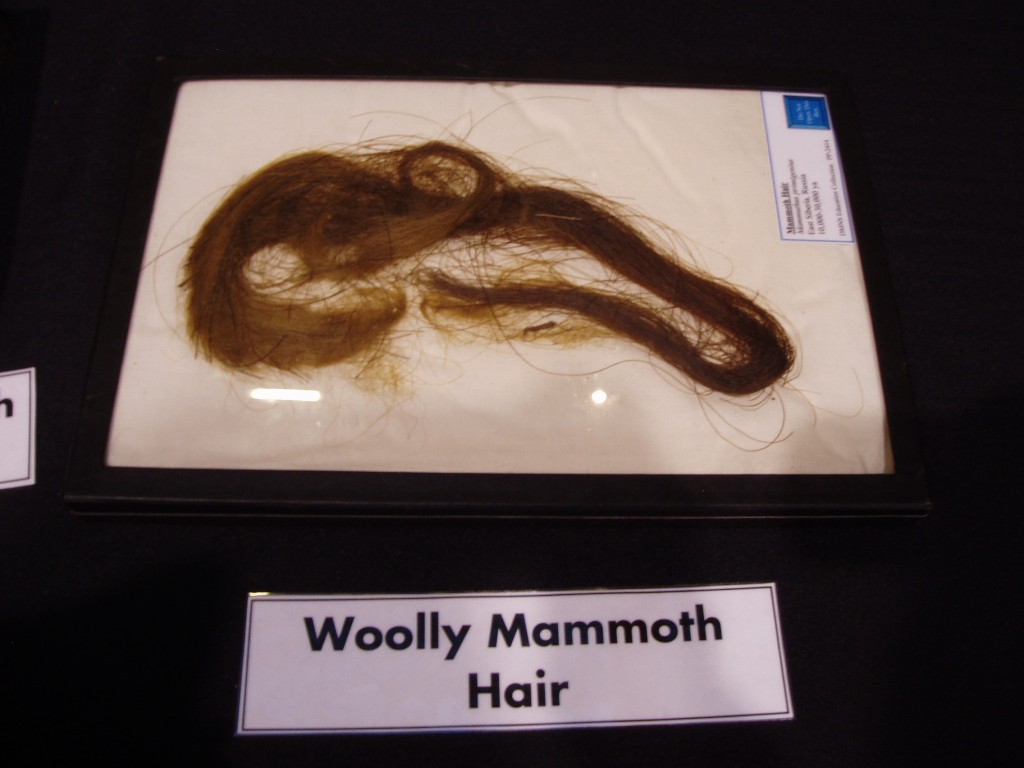

{ 1 trackback }
{ 8 comments… read them below or add one }
fantastic! i just love stuff like this. how wonderful that the guy in the bulldozer wasn’t a bone head :)
Yeah, props to the guy in the bulldozer! Still makes me wonder if they are going to find fungi in up there?
Probably a long shot, unfortunately, unless they find a shelf/conk fungus stuck to some of that old (beaver-gnawed) wood. You’ve seen what inevitably happens to agarics after a few days . . . sadly, I doubt we could find any of them intact — but maybe (probably?) you could find their spores in the dirt under a microscope . . .
The volunteers told you wrong. Ground sloths were vegetarians, not insect-eaters.
Check out my website–it’s all about the Pleistocene ecology of southeastern North America.
There is so much more to come on this amazing story. The DMNS team of paleonotologists will be returning to Snowmass in early May 2011 to continue the exploration. Click to http://www.snowmasstodon.com for more on the story and photo albums.
Hey Jenn! Wanted to just say GREAT coverage of the Snowmastodon stuff! Our band has written a song about it… TWO actually. Two versions of a song and would love for you to visit our site and vote for which one you prefer! Trying to get the word out about this amazing find! Hope you enjoy the tunes! Let us know!
http://www.ratfishwranglers.com/+/Snowmastodon/Snowmastodon.html
Thanks Russell! Definitely preferred the pop version — so that’s what I voted. : )
Jen
To think we use to party there !! in the late 60’s before “Snowmass Village”was even there! AMAZING!!! What lies beneth..